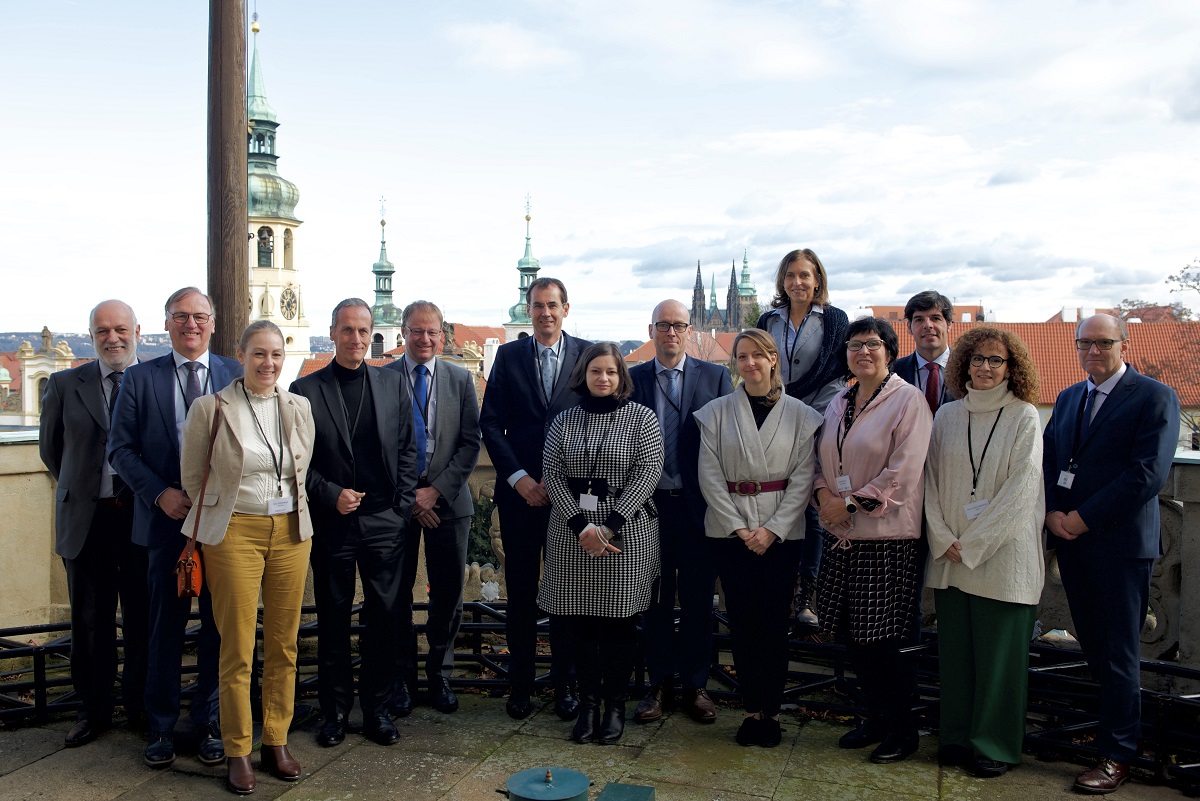Contenido principal
2021
The HERCA Steering Committee approves its new strategy for the next period 2021-2026

A delegation of the Spanish Nuclear Safety Council (CSN), headed by commissioner Pilar Lucio, has participated in the twenty-eighth meeting of the Board of the Heads of the European Radiological protection Competent Authorities (HERCA) that has been held in Prague (Czech Republic) on December 1st and 2nd.
The outgoing president of HERCA, Karla Petrová, Deputy Chair for radiation protection of the State Office for Nuclear Safety of Czech Republic (SUJB), has started the meeting by sharing with the attendees the main activities of representation of the association in the last semester.
During the meeting, the following matters were presented and discussed, among others: HERCA strategic document for the next 5 years (developed by the group in charge of HERCA policies); the presentation of the preliminary analysis of the questionnaire on occupational exposure and dose registration, carried out by the network on occupational dose collection registration and reporting (ODCRR); and the presentation and approval of the new mandate and proposals of actions for the period 2022-2025 of the Working Group on Medical Applications (WGMA).
In addition, other relevant international organizations related to radiological protection have participated and shared experiences and issues of interest, which usually participate as observers within the Association, such as the International Atomic Energy Agency (IAEA) and the European Commission. It is worth highlighting, on this occasion, the participation of the president of the International Commission on Radiological Protection (ICRP) with the aim of involving HERCA in the process of preparing the new recommendations that this Commission is planning to develop in the near future.
Working Groups
During these working sessions, It has also been highlighted the presentation that the working group on sources and practices in research and industry (WGRISP) has made on the use of alternative technologies to reduce the risk derived from the use of sources in industrial radiography, as well as the approval of the questionnaire on orphan sources and metal contamination, of which the group will prepare an information document.
In this context, the Working Group on Natural Radiation (WGNAT) has announced the publication on the HERCA website of a strategic document for member states, such as the HERCA Guide on the application of the concepts of exemption and clearance regarding the NORM regulations.
Finally, the progress made in the Education and Training group (WGET) and in the group dedicated to Emergencies (WGE) have been highlighted.
On this occasion, it must be emphasized the approval by the HERCA Board of the appointment of the new president, Nina Cromnier, of the Swedish regulatory body; as well as the appointment of two new vice-presidents: Jean-Luc Lachaume from the French regulator and Patrick Majerus from the Luxembourg regulator. It should be remembered that, up to now, one of the two vice-presidencies has been occupied by María Fernanda Sánchez Ojanguren, who recently also left her position as Technical Director of Radiological Protection at the CSN: She was publicly thanked for her work and support to the association during these last years.
HERCA is composed of representatives of 56 European authorities competent in Radiological Protection, belonging to 32 European countries. Since its creation in 2007, HERCA contributes to the harmonization of regulatory practices, the identification of common problems and the proposal of practical solutions to such problems, in the field of Radiological Protection.
* Check here the glossary of technical terms *
